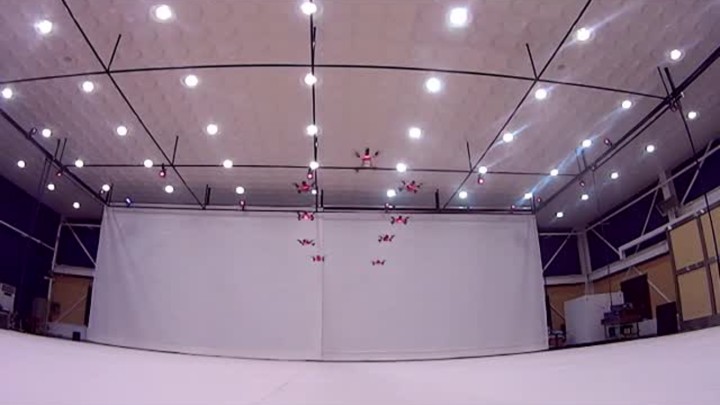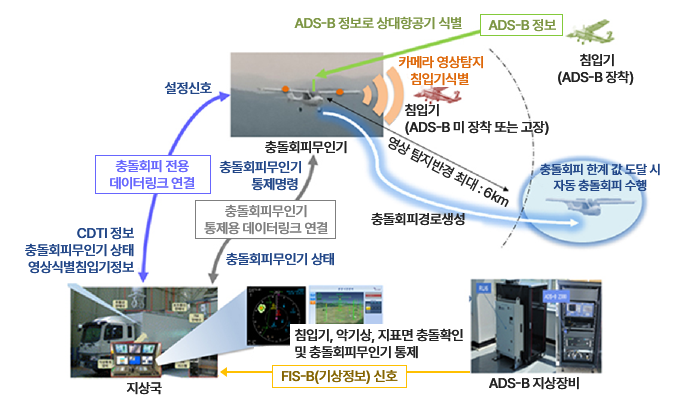

Development of UAV Collision Avoidance System Based on ADS-B
Therefore, the development of collision avoidance systems is essential to support the commercial expansion of UAVs and ensure the safety of manned aviation. It is also a core enabling technology for Urban Air Mobility (UAM), a field actively being pursued by Korea and other nations as a future mode of air transportation. Therefore, the development of collision avoidance systems is essential to support the commercial expansion of UAVs and ensure the safety of manned aviation. It is also a core enabling technology for Urban Air Mobility (UAM), a field actively being pursued by Korea and other nations as a future mode of air transportation.
KARI, in collaboration with domestic industry partners, developed an onboard UAV collision avoidance system incorporating collision avoidance algorithms, Automatic Dependent Surveillance-Broadcast (ADS-B), and visual sensors. Conducted from 2015 to 2020, the project aimed to develop and test a sensor fusion-based UAV collision avoidance system using ADS-B, with performance comparable to that of manned aircraft. The goal was to enable safe integration of UAVs into civilian airspace.
Performance Validation Through Function Verification, Data Collection Flights, and Integrated Flight Tests
To prevent mid-air collisions, a collision avoidance system for both manned and unmanned aircraft must be able to detect nearby aircraft and generate timely avoidance maneuvers. In manned aircraft, collision avoidance is typically handled by the Traffic Collision Avoidance System (TCAS) using transponders. More recently, ADS-B—which allows aircraft to broadcast and receive positional data—has emerged as a preferred technology for detecting nearby aircraft. KARI designed and developed a collision avoidance system that uses ADS-B to detect and avoid intruding aircraft.
The system consists of three main components: a collision avoidance module, ADS-B equipment, and communication devices. The ADS-B system employs the Universal Access Transceiver (UAT) method, operating at 1 Mbps on the 978 MHz band. The onboard equipment is configured to interpret and relay information about intruding aircraft based on ADS-B messages.
The developed system successfully passed component-level tests for functional verification. It underwent flight tests for real-world data collection, and based on the analyzed results, the collision avoidance algorithm was optimized. Final integrated flight tests validated the system's overall performance.

